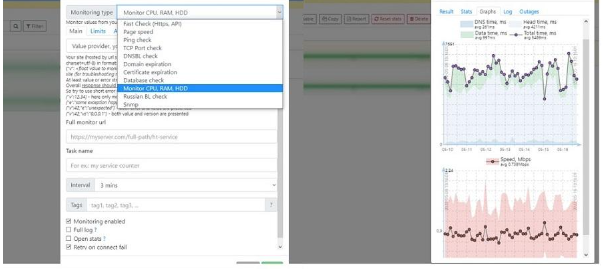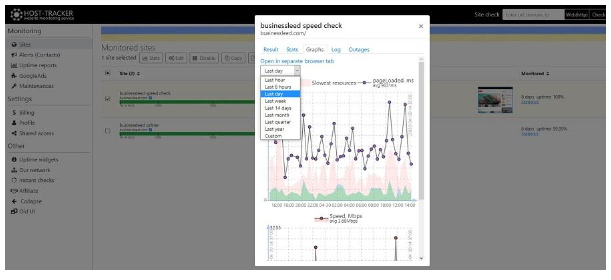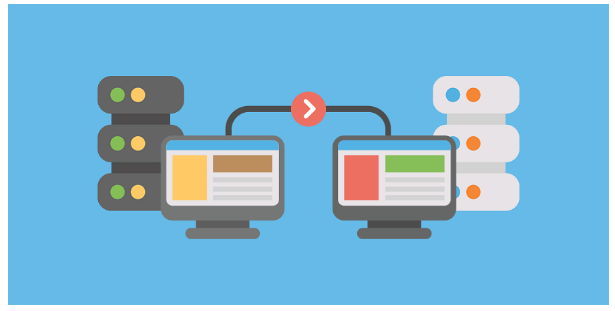Website speed is a critical element for any website owner. No one likes to wait for a website to load, and Google has made it clear that website speed is a factor in website ranking.
In this article, we will discuss the importance of website speed and some tips and tricks to help you make your website load faster.
We will also review some popular products that can help you improve your website’s performance.
Why Is My Site Loading Slowly?
Many factors can contribute to a website loading slowly. It could be the size of your images, poor website design, or even just the way your website is hosted.
Let’s take a look at each of these factors and see how they can impact your website’s speed.
Images
Images are often the largest files on a website and can therefore take the longest to load.
If you have large images on your website, you may want to consider reducing their file size.
There are many ways to do this, but one popular method is to use an image compression tool like TinyPNG.
This will help reduce the file size of your images without sacrificing quality.
Website Design
Another common reason for slow website speeds is poor website design. If your website is not well-designed, it can take longer for the browser to render the page.
This can be a problem if you have a lot of content on your website or if you use complex code.
Luckily, many great website design tips can help you create a fast and responsive website.
Hosting
Your website’s hosting can also impact its speed. If you are using a shared hosting plan, your website may be sharing resources with other websites on the same server.
This can lead to slower speeds because all of the websites on the server are competing for the same resources.
If you have doubts about the quality of your tariff plan or server, then it is worth check host, this kind of monitoring will give you answers to the question of why your site is slow.
If possible, you should upgrade to a dedicated server or the best vps hosting to ensure that your website has the resources it needs to load quickly.
Many other factors can impact website speed, but these are some of the most common.
By addressing these issues, you can help improve your website’s performance.
Products To Help Speed Up Your Website
Now that we’ve looked at some of the reasons why your website may be loading slowly, let’s take a look at some products that can help you speed it up.
Below, we’ll review three popular options: CloudFlare, WP Rocket, and Jetpack.
CloudFlare
CloudFlare is a content delivery network (CDN) that helps to improve website speed by caching your website’s resources on servers around the world.
This means that when someone visits your website, they will be able to load your website’s content from the server that is closest to them.
CloudFlare also offers a number of other features that can help improve website performance, including minification, image optimization, and security.
WP Rocket
WP Rocket is a popular WordPress plugin that helps to speed up your website by caching your website’s resources and delivering them to visitors more quickly.
WP Rocket also includes features like minification and image optimization to help improve website speed.
Jetpack
Jetpack is a plugin for WordPress that includes a number of features to help improve website performance.
One of these features is site acceleration, which helps to speed up the delivery of your website’s content.
Jetpack also includes other features like security and backup, making it a great all-in-one solution for website owners.
Many other products can help you speed up your website. These are just three of the most popular options.
By using one of these products, you can help improve your website’s speed and performance.
Automated Monitoring To Detect Problems On The Site
One of the best ways to ensure that your website is running smoothly is to use an automated website monitoring service.
This type of service will regularly check your website for issues and alert you if there are any problems.
This can help you identify and fix problems quickly before they have a chance to impact your website’s speed.
There are many great website monitoring services available, but one of our favorites is HostTracker.
So, host-tracker presents the perfect website monitoring tool, as well as performance testing and analysis.
This makes it a great tool for website owners who want to keep their sites running smoothly.
For webmasters, all the functionality of the service is available for free for 30 days. This offer is available to all new HostTracker customers.
You can also use manual monitoring mode without registration. In addition to the site speed test, other types of tests are available to users:
- Website uptime;
- DNS blacklist;
- Ping check (ICMP);
- SSL and domain expiration date;
- WHOIS check www.host-tracker.com/en/ic/whois-check;
- TCP port check;
- Traceroute test.
You can try all the features of the website speed checker for free for 30 days, and then decide which plan is best for you.
Website speed is important for many reasons, but it’s especially important if you want your website to be successful.
By addressing the issues that can slow down your website, you can help ensure that your website loads quickly and efficiently.
And by using one of the products or services we’ve reviewed above, you can make sure that your website is always running at its best. Thanks for reading! We hope this article has been helpful.
How To Transfer The Site To A New Hosting?
If you’re planning to move your website to a new host, there are a few things you need to do to ensure that the transition is smooth.
One of the most important things is to make sure that your website’s DNS records are updated to point to the new host.
This can be done by contacting your current host and asking them to update the records, or by updating the records yourself.
Another important thing to do when moving your website is to take a full backup of your site.
This will help ensure that you have a copy of all your website’s files and data in case anything goes wrong during the transfer process.
Once you’ve backed up your site and updated your DNS records, you’re ready to begin transferring your website to its new home.
The first thing you’ll need to do is export your website’s content from your current host. This can usually be done through your host’s control panel or via an FTP client.
Next, you’ll need to import your website’s content into the new host. This can also be done through the new host’s control panel or via an FTP client.
Once your website’s content has been imported, you’ll need to update your website’s permalinks to point to the new location of your site.
Finally, once everything is up and running at the new host, you can contact your old host and cancel your account.
Moving your website doesn’t have to be a difficult process, but it’s important to do it right to avoid any potential problems.
By following these steps, you can ensure that your website is transferred successfully and that your visitors will be able to find your site in its new home.
By following these tips, you can help improve your website’s speed and performance.
By using the right tools and taking advantage of automated monitoring, you can make sure that your website is always running at its best









